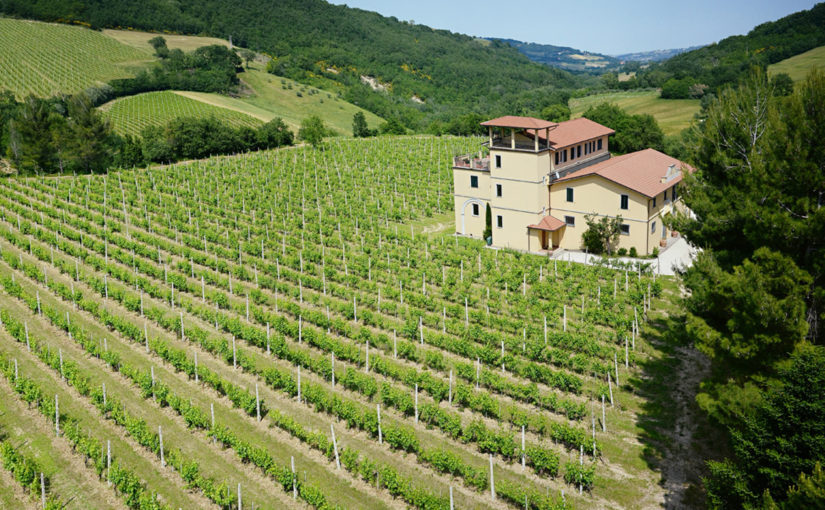My husband Matt gripped the steering wheel and turned it so quickly it reminded me of an arcade car game. We took a tight corner and I thought I would get carsick. After a series of switchbacks, Matt sped down a straight stretch. We hit a bump and the car flew for a long second, my stomach butterflied.
The 12:04 arrival time on our GPS narrowed another minute. We had no medical emergency or otherwise acceptable reason to drive the way some Italians enjoy. We were headed to Serrapetrona, 20 minutes from our home in Le Marche to visit Alberto Quacquarini’s tasting room without an appointment, and with the knowledge that they closed for lunch at 12:30.
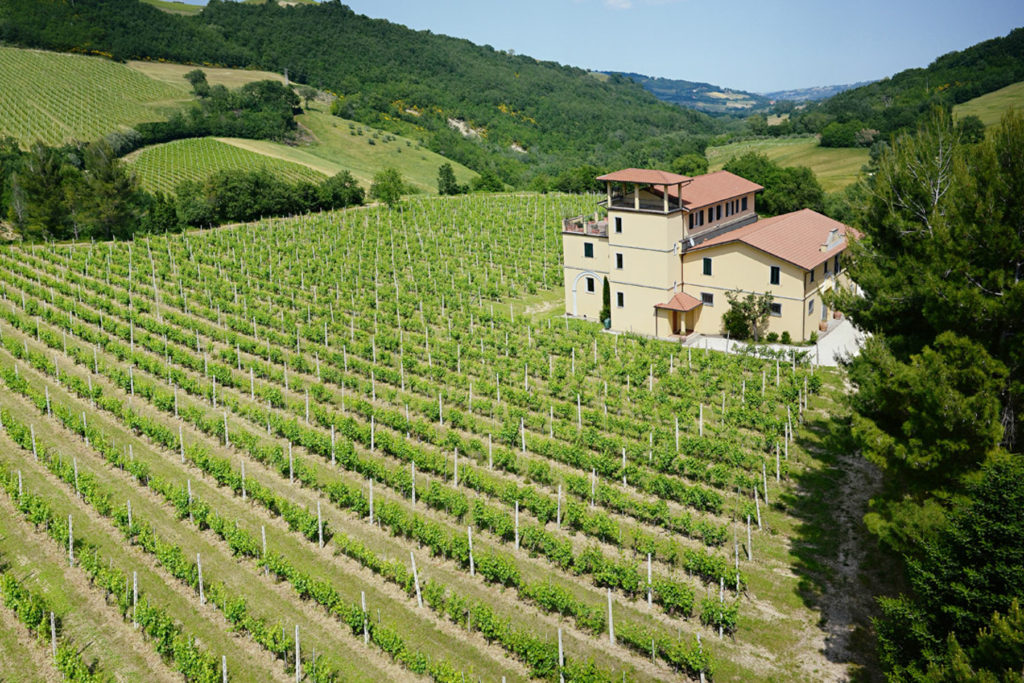
Image courtesy of Az. Agr. Alberto Quacquarini
Vernaccia di Serrapetrona is a red sparking wine, made with Vernaccia Nera grapes indigenous to Serrapetrona, found nowhere else, and cultivated on only 163 acres. It is made in two different styles: dry, to drink with food; or sweet, to enjoy with dessert. Serrapetrona, without the Vernaccia di, lacks the bubbles but retains the fruity, slightly bitter flavor. Stefano at Il Sigillo had introduced us to Serrapetrona, but we had not yet tried the sparklers.
We arrived at 12:02. A curly haired gentleman stood up behind a desk in the back and beamed as he approached us.
“Salve,” he said, using the polite friendly greeting I’ve heard more in Le Marche than anywhere else in Italy.
I explained in Italian that we would love to learn more about, and try some Vernaccia.
“Yes, certainly,” he said, looking down at his watch. “We can do a quick tasting. Unfortunately, we close at 12:30 for lunch.”
His name was Massimiliano. “Max, in English,” and he invited us to sit at the large tasting table. “We can do the tasting in English if you’d like,” he said and filled two glasses with a red wine. He was generous; I swirled it carefully.
“This is our Serrapetrona, the basic wine, made with 100% Vernaccia nera grapes.” We sipped it and loved it and Max went behind the counter to prepare a local salume, two local cheeses, bread, and crackers.
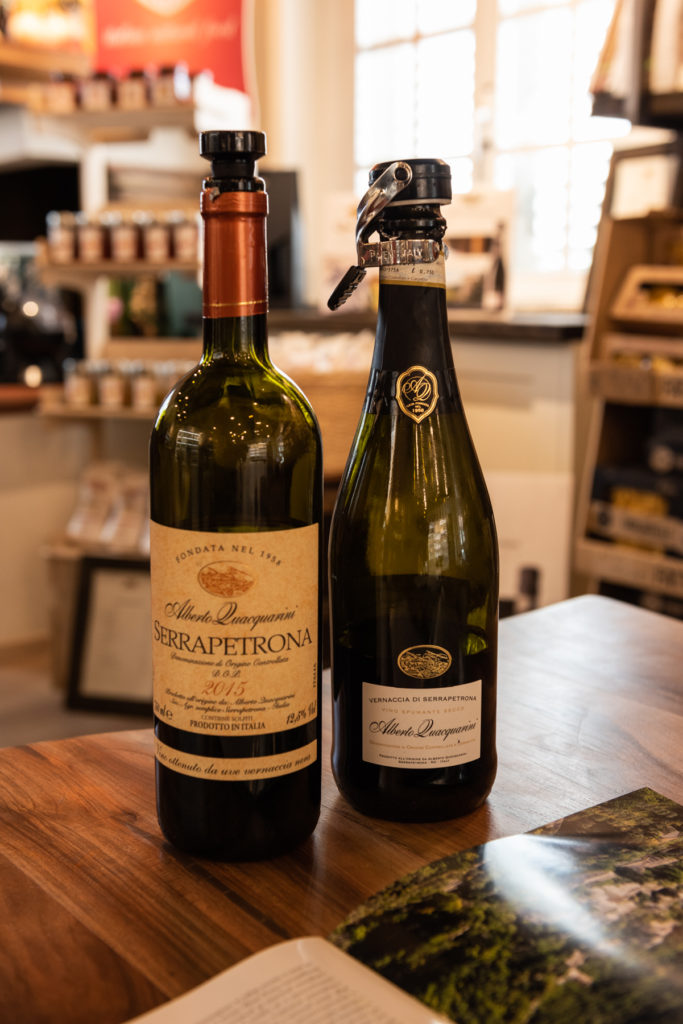
“We pick the harvest by hand in October, but we hang 40-45% of the grapes to dry for three months. The Serrapetrona is what we make after the first fermentation, so it’s not sparkling, and without any dried grapes.”
Anything but basic, this was the wine Stefano had paired with a juicy steak, meaty wild boar, gamey rabbit, and savory pasta. Serrapetrona is strong but not overpowering, smooth, full-bodied, with spice and floral notes, not too dry, a pleasantly bitter aftertaste, and eminently affordable.
Max poured us the dry version of the sparkling Vernaccia di Serrapetrona. My watch read 12:23. His eyes twinkled like a magician teaching us a trick but swearing us to secrecy.
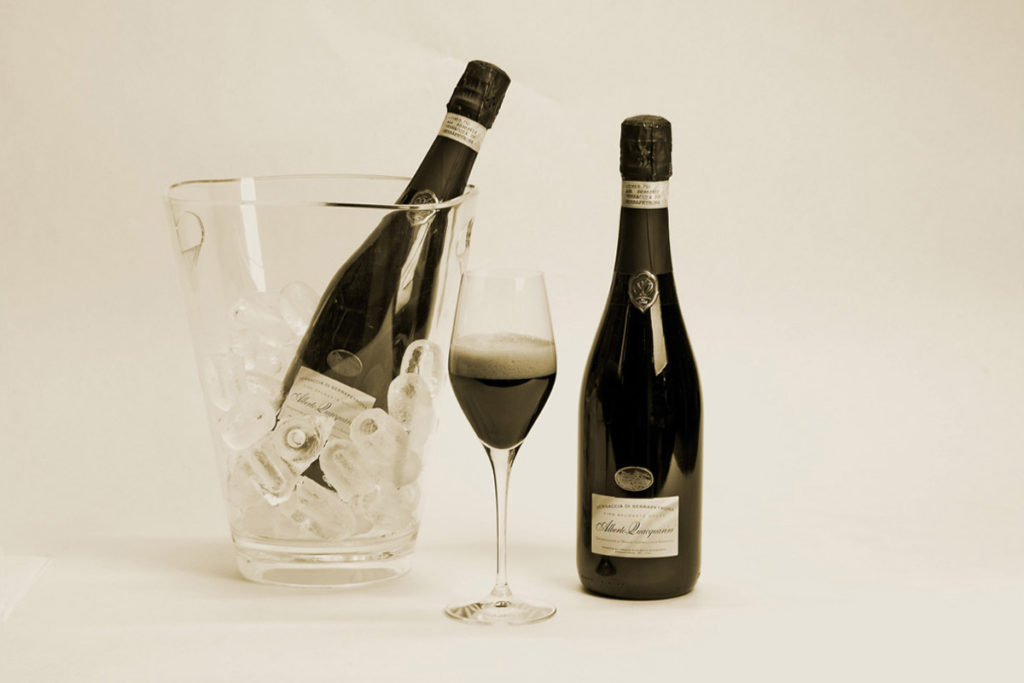
Image courtesy of Az. Agr. Alberto Quacquarini
“To make the Vernaccia di Serrapetrona, we take the dry grapes, whose flavors are more concentrated and sweet like raisons, and mix it with the basic wine for the second fermentation. It’s then aged in steel tanks for months to undergo its third fermentation. We make this dry version, and a sweet one. From harvest to sale it takes more than 18 months,” He brought us over a new salume to try. “It goes particularly well with pork, especially ciabuscolo.”
Lighter and more delicate than the Serrapetrona, I tasted pepper with cherries. Max sat down with us and we learned his English is so good because his wife teaches it. He suggested we come back in November when the village has a Vernaccia festival and we could see the grapes hanging to dry.
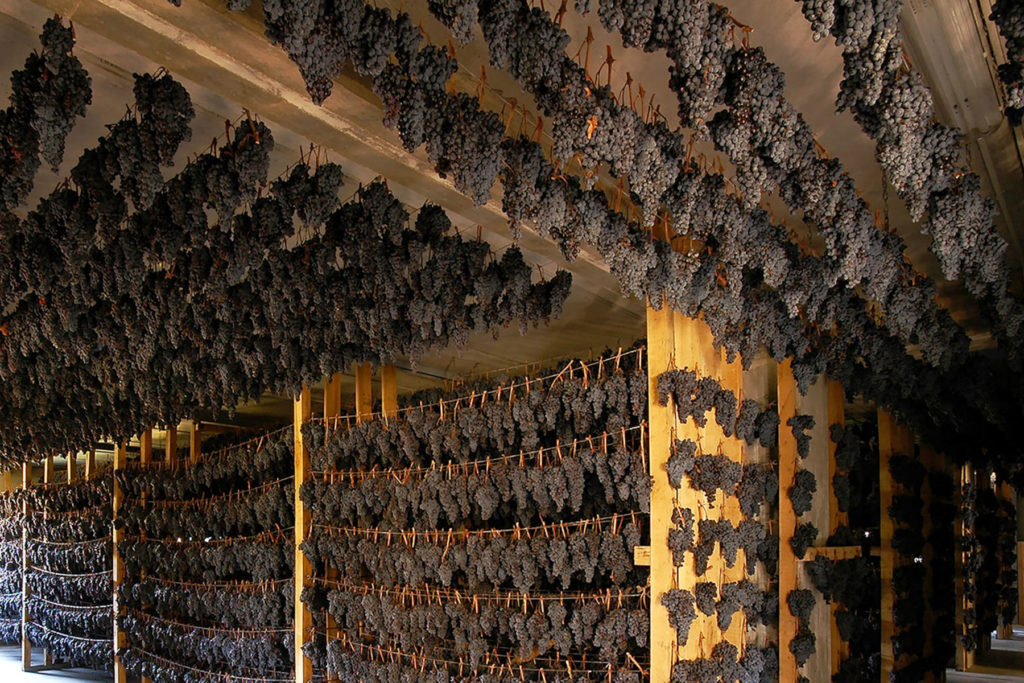
Image courtesy of Az. Agr. Alberto Quacquarini
It was well after 12:30 when he poured us a glass of the Petronio passito, made from dried Vernaccia nera grapes and aged in oak barrels for 3 years. The bell on the door rang and a group of Italian tourists entered, seemingly relieved to find the tasting room open. Max met them at the counter and wineglasses clinked as he started their tasting.
I wandered the tasting room filled with wines and their awards, local pastas, the salume and cheese we had tried, and also gourmet chocolates that the Quacquarini family makes.
The Italians asked if they could take our picture. We posed with our wine glasses and made an international toast. They bought some wine and left, bidding us “ciao, ciao, arrivederci,” as strangers often do in Le Marche.
Max poured us the sweet, sparkling Vernaccia. “A dessert wine. Very good with biscotti.” He brought us some cookies. It was sweet but not cloying, fresh and crisp. I envisioned it as the perfect ending to a rich meal typical of Le Marche.
At 2 PM we left with several bottles of wine, the two salumi, and not nearly enough chocolate. We thanked Max for giving up his lunch hour. He waved his hand and suggested we lunch at La Cantinella in Serrapetrona.
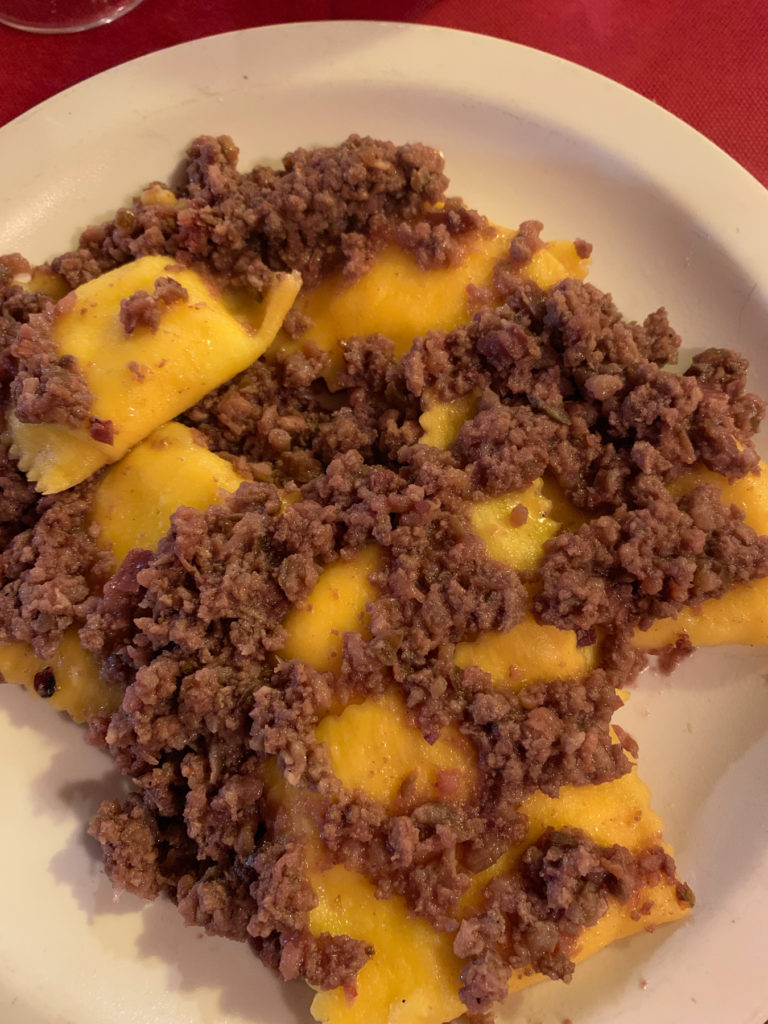
When we arrived at La Cantinella, the Italians we had seen earlier were finishing their lunch. They waved and greeted us like old friends. I ordered the ravioli with a Vernaccia meat sauce. The house Serrapetrona wine was delicious and only €3 for half-liter.
“You know,” I said to Matt over lunch, “Vernaccia di Serrapetrona is a lot like Le Marche itself: unknown, unique, quality, delicious, and secret.”
- If you missed my last post about La Cucina Marchigiana, read it here.
- For a map of our favorite restaurants click here.
- Sign up to receive my blog postings by email here.
- If you’d like updates on the opening of our vacation home Casa Pace e Gioia, click here.

